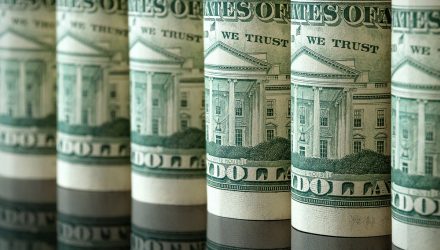Targeted exchange traded fund strategies centered around free cash flow yield can help solidify your portfolio in today’s strenuous investing landscape.
In the recent webcast, Are Value Managers Measuring the Wrong Thing?, Sean O’Hara, President, Pacer ETFs Distributors, argued that investors should focus on quality value companies to filter out ‘value traps’.
The price-to-book ratio remains a key input to all major value indices that value investors rely upon. O’Hara noted that from 1960 to 1989, the cheapest 20% of stocks based on P/B significantly outperformed the most expensive 20%. However, from 1990 through 2020, the relative performance of the cheapest P/B stocks was much more muted. More recently, the P/B has ceased to be as effective as the economy shifts toward intangible investments that are not captured.
“In the 1960s, companies engaged in large manufacturing footprint producing activities and investments in physical infrastructure to build cars, extract and refine oil, and produce chemicals or steel. These companies required tangible investments to produce tangible products,” O’Hara said.
“Now, more companies provide services or products that are differentiated by their design, innovation, and their significant research, development and intellectual property,” he added.
Consequently, O’Hara argued that traditional book value makes less sense in an economy driven by intangibles such as patents, licensing agreements, proprietary data, brand value, and network effects. Instead, companies’ value and ability to generate free cash flow mostly is a result of their intangible assets.
“Rather than assuming value investing might not work, it may simply be that the most often used measure of value has become less relevant in a changed world,” O’Hara said. “While book value or other accrual-based accounting measures may still be useful in comparing companies engaged in physical activities, they are less meaningful for the increasing number of companies engaged in intangible activities.”
Alternatively, O’Hara believes that measures of free cash generation are likely to provide a truer valuation comparison between firms. More free cash flow is tied to the intangible assets mentioned.
“Looking at free cash flow in relation to enterprise value puts companies on more equal footing and presents a more comparable picture of valuation,” O’Hara said.
“Using free cash flow yield to measure the sustainability of a company may produce potentially higher returns and more attractive upside/downside capture overtime.”
Investors interested in the free cash flow metric now have several ETF options to choose from. For instance, the Pacer Global Cash Cows Dividend ETF (NYSEArca: GCOW), Pacer US Cash Cows 100 ETF (NYSEArca: COWZ), Pacer US Small Cap Cash Cows 100 ETF (BATS: CALF), Pacer Developed Markets International Cash Cows 100 ETF (BATS: ICOW), Pacer Emerging Markets Cash Cows 100 ETF (NasdaqGM: ECOW), Pacer US Cash Cows Growth ETF (BUL), and Pacer Cash Cows Fund of Funds ETF (HERD) all implement free cash flow yield screens to narrow their investing universes.
O’Hara also highlighted the Pacer TrendPilot US Bond ETF (PTBD) as an alternative for fixed income investors in the current market environment. PTBD uses trend-following to alternate exposure between high yield corporate bonds and U.S. Treasury Bonds based on three indicators to: participate in high yield bonds when it is trending up, pare back market exposure during short-term market downtrends, and prevent extended declines by moving to T-bonds during long-term market downtrends.
Financial advisors who are interested in learning more about free cash flow yield strategies can watch the webcast here on demand.
